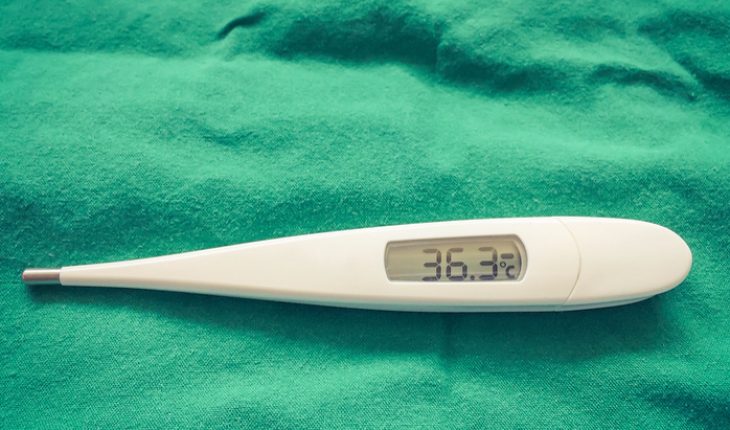Vital signs have long been used by doctors to decide if we are fit and well, or if our bodies are struggling with underlying ill health. A weak pulse, a high temperature or low blood oxygen can point to underlying medical problem like infection, heart disease, asthma and kidney problems. Increasingly, however, a booming industry in self-testing kits means that people can test their PSA levels, their blood sugar, cholesterol levels, underactive thyroid and even their DNA, all in the comfort of their own homes with a set of printed instructions. And the NHS free Health Check programme, offered to adults aged between 40 and 74, which launched in 2009, has just accelerated the trend of testing for everything and anything.
However, recent research suggests that health MOTs may be wildly inaccurate, at worst missing serious illness and at best creating a vast army of ‘worried well’. In some cases, healthy people are being told they are sick and put on medication unnecessarily, according to a report published in the Journal of Public Health. ‘There is a risk of over testing and turning natural concern about health into an income-generating activity,’ says Professor Simon Capewell, professor of public health and policy at the University of Liverpool and co-author of the report which suggested that the NHS Health Check Programme tests typically miss 30 per cent of patients who go on to suffer a heart disease or stroke – rising as high as 50 per cent in some cases.
The NHS Health Check programme was supposed to save 2,000 lives a year from heart attacks and strokes, but this figure is closer to 1000, at a cost of £450m say researchers.
‘The fact is the health MOT tests are a bad investment and create difficulties of their own,’ says Professor Capewell, who says he would never take a cholesterol test himself but rather sticks to a healthy balanced diet. ‘It would be much better to encourage people to maintain disease-free healthy lifestyles and tackle issues such as obesity and binge drinking for example.’
Here we look at some key ‘vital signs’ which are regularly used to check health and ask the experts whether tests are worthwhile or worthless.
Heart rate
How is it measured?
This can be measured using finger tip pressure and a stopwatch at any place on the skin where there is a large artery, including the neck or the wrist. Digital pulsometers are now widely used too. A patient should be sitting and have done no activity least five minutes when their resting heart rate is measured.
What is the optimal reading?
Most adults have a resting heart rate (the rate it is during relaxation) of between 60 and 100 beats per minute, explains Christopher Allen, a senior cardiac nurse at the British Heart Foundation. ‘Your heart is a muscle and the more you work it out, the fitter it will be. And a fitter heart will pump more blood each time it contracts, so it needs fewer beats per minute to do its job.’
How reliable is it?
Results can be skewed if a patient has been active in the minutes before the test or is nervous of the test itself. Drinking coffee or smoking before the test can also increase heart rate. ‘A patient should be sitting and have done no activity least five minutes when their resting heart rate is measured,’ says consultant cardiologist Professor Martin Cowie.
Although a resting heart rate below 60 beats per minute is known as brachycardia, this doesn’t have to be a problem — indeed, some very fit people have a resting heart rate of below 50. ‘But if someone also suffers dizziness and blackouts, it suggests their heart is not working as it should,’ says Christopher Allen.
Blood pressure
How is it measured?
Blood pressure is a measurement of the force applied to the walls of the arteries as the heart pumps blood through the body and is usually measured from the upper arm. Blood pressure is usually expressed in terms of the systolic (maximum) pressure over diastolic (minimum) pressure and is measured in millimeters of mercury, mm Hg.
A cuff is wound around the upper arm and inflated to temporarily stop the flow of blood through the arm. As air is let out of the bag, the blood flow resumes and a reading is taken
What is the optimal reading?
According to the charity, Blood Pressure UK, the ideal reading should be below 120 over 80 (120/80). ‘This is the ideal blood pressure for people wishing to have good health. At this level, we have a much lower risk of heart disease or stroke,’ says Katharine Jenner, chief executive of Blood Pressure UK.
However, people who are taking medication for high blood pressure are encouraged only to keep their blood pressure below 140/90mm Hg. Around 16 million people in the UK have high blood pressure, and around 6 million of them take at least one pill to keep it under control.
How reliable is it?
Although no one disputes that 120/80 mmHg is an ideal reading, the new Systolic Blood Pressure Intervention Trial (SPRINT) study currently underway in the US suggests that 140/90 mm Hg for people with diagnosed hypertension is set too high. ‘We should be aiming at a much lower figure, just 120/90 mmHg. By not going low enough, we could be causing unnecessary deaths,’ says Professor Cowie.
Blood pressure readings should also be taken when you are feeling calm and rested, otherwise you can get a false result. The phenomenon of ‘white coat hypertension’ happens when someone gets flustered at a doctor’s surgery. ‘It is also important to make sure that the cuff is the right fit. A cuff that is too big or too small will give an inaccurate reading’, according to Katharine Jenner of Blood Pressure UK.
Temperature
How is it measured?
The classic way to test for body temperature it to place a thermometer under a patient’s tongue but it can also be measured under the arm or through the rectum. Thermometers work in different ways to show the temperature. Traditionally, heat causes a liquid or solid to expand and influence a reading on a scale. Newer -type thermometers measure the infrared energy emitted from the skin.
What is the optimal reading?
The ‘normal’ body temperature of 37 degree C was first established by a German doctor working in the 19th century, Dr Carl Wunderlich, who took temperature readings from thousands of patients. ‘It is generally accepted that normal body temperature ranges between 36.1C (97F) to 37.2C (99F),’ says Dr Louise Selby, a GP and the director of the Guildford Private GP group .
A fever is defined as anything over 38-38.5 degrees Centigrade or 101-101.5 degrees Farenheit.
How reliable is it?
Thermometers are quite accurate but need to be used when a patient is at rest and not just after physical activity, which can increase body temperature.
There is also a wide range of ‘normal’. ‘Normal temperature can vary according to the activity of a person or even the time of day,’ says Dr Selby. Research carried out in the US in 1998 decided that 36.8C was a more accurate figure.
Normal body temperature also depends on where the temperature reading is taken. For instance, a reading from the armpit will be about 0.5C lower than the body’s core temperature. Rectal temperatures, which are taken well within the body, are usually around one degree higher than temperatures taken under the tongue.
Your age also affects your body temperature. A 2006 study carried out at Winthrop University in the US found that older people have lower temperatures and that, even when ill, their bodies may never reach temperatures that would be regarded as fever.
Blood sugar levels
How is it measured?
Blood sugar levels vary at different times of day. There are various tests which can reveal if you have Type 2 diabetes or pre-diabetes, which is early stage. A blood sample for a random plasma glucose test can be taken at any time. A fasting plasma glucose test is taken after at least eight hours of fasting and is therefore usually taken in the morning.
An oral glucose tolerance test involves taking a first taking a fasting sample of blood and then taking a very sweet drink containing 75g of glucose.
‘After having this drink you need to stay at rest until a further blood sample is taken after 2 hours,’ says Pav Kalsi, clinical adviser at the charity, Diabetes UK.
An HbA1c test does not directly measure the level of blood glucose. Instead, it refers to glycated haemoglobin, which develops when haemoglobin joins with glucose in the blood. This shows how high or low your blood glucose levels have tended to be over a period of two to three months.
What is the optimal reading?
According to the International Diabetes Federation’s target for healthy individuals, blood sugar ranges should be between 4.0 to 6.0 mmol/L (72 to 108 mg/dL) when fasting. Up to 7.8 mmol/L (140 mg/dL) 2 hours after eating. For people with diabetes, NICE has established the following blood sugar level targets. Before meals: 4 to 7 mmol/L for people with type 1 or type 2 diabetes. After meals: under 9 mmol/L for people with type 1 diabetes and under 8.5mmol/L for people with type 2 diabetes.
How reliable is it?
Tests can be very reliable if performed correctly but should only be taken after a risk score has been calculated,’ says Pav Kalsi. People are more likely to develop Type 2 diabetes, which occurs later in life, is they are overweight or obese, or if they have a close family member who already has the disease.
Pav Kalsi says that all the tests should be undertaken by a doctor or a practice nurse. ‘Self testing kits can give very misleading results depending on when they are used in the day and meal times. ‘If people are concerned that they may have Type 2 diabetes, we always advise that they make an appointment to see their GP.’
Diabetics can and do use self-testing kits to give them an indication about their blood sugar levels at different times of the day, but only after a diagnosis has been made.
Obesity
How is it measured?
The Body Mass Index, first devised in the 1830s is a simple way to measure the total amount of body fat by using a mathematical equation – dividing your weight in kilograms by your height in metres squared.
What is the optimal reading?
A healthy BMI for an adult is between 18.5 and 25.
How reliable is it?
‘BMI does not differentiate between body fat and muscle mass and may not accurately reflect changes in body composition,’ says Tom Callingham , a personal fitness instructor based in Hampshire. ‘Very fit people with high muscle mass may find that they score a high BMI which suggests they are overweight or even obese,’ says Callingham. Healthy pregnant women may also find they have a high BMI. BMI also exaggerates fatness in tall people and thinness in shorter people, according to Nick Trefethen, Professor of Numerical Analysis at Oxford University’s Mathematical Institute.
The test also tends to underestimate the BMI for elderly people, giving them the false impression they are underweight.
A better model may be to use waist to height ration. Dr Margaret Ashwell, an independent consultant and former science director of the British Nutrition Foundation, explained at the 19th Congress on Obesity in Lyon, France, May 2012, that waist to height ratio is more accurate when it come to predicting obesity-related disease than BMI.
Dr Ashwell said ‘Keeping your waist circumference to less than half your height can help increase life expectancy for every person in the world.’
High Cholesterol
How is it measured?
Cholesterol is a fatty substance which plays a vital role in many functions of the body. It’s mainly made by the liver, but can also be found in some foods. There are blood tests which test for bad LDL cholesterol, which can cause fatty layers to build up on the walls of arteries, and good HDL cholesterol, which carries excess levels of cholesterol to the liver where it is broken down or excreted from the body.
What is the optimal reading?
The government recommends that total cholesterol levels should be 5 mmol/L or less for healthy adults and 4 mmol/L or less for those at high risk. Levels of LDL should be 3 mmol/L or less for healthy adults or 2 mmol/L or less for those at high risk
An ideal level of HDL is above 1 mmol/L. A lower level of HDL can increase your risk of heart disease.
How reliable is it?
Tests for cholesterol have a margin of error which can be quite wide. The National Institutes for Health in the US set NIH set accuracy guidelines for labs which allow blood tests to be as much as 15 percent higher or 15 percent lower than actual cholesterol levels. ‘This means that some people may be given a false diagnosis of high cholesterol and put on drugs they don’t really need,’ says Professor Simon Capewell, professor of public health and policy at the University of Liverpool. ‘Drugs like statins should not be taken casually. More than half of people who are prescribed them are no longer taking them a year later, for a range of reasons including side effects.’
Eight million people take statins in the UK, which help lower cholesterol and reduce the risk of heart attack, but many suffer side effects. A major study of more than 100,000 people who’d been prescribed statins from 2000 to 2008 found that 17 percent of patients reported side effects such as muscle pain, nausea, and liver and nervous system problems, tiredness or shortness of breath.
Prostate health
How is it measured?
The PSA test is widely used to check if men are at risk of prostate cancer, which the most common cancer affecting men in the UK. Around 40,000 new cases are diagnosed each year. A simple blood test, it measures the level of PSA (Prostate Specific Antigen) in the blood. All men have some PSA in their blood, which is made by the prostate gland. High levels can indicate prostate cancer.
What is the healthy reading?
The amount of PSA in your blood is measured in nanograms of PSA per millilitre of blood (ng/ml). PSA levels can range from 1ng/ml to hundreds of ng/ml. If you’re aged 50-59, your PSA level is considered raised if it’s 3ng/ml or higher. If you’re aged 60-69, your PSA level is considered raised if it’s 4ng/ml or higher. If you’re aged 70 or over, your PSA level is considered raised if it’s 5ng/ml or higher.
How reliable is it?
Levels of PSA can be affected by many things apart from cancer. In fact, around two thirds of men with high PSA do not have prostate cancer.
High levels can be caused by age, infection or even some kinds of medication. A recent study found that obese men may have lower than average levels of PSA in their blood, so possible cancer cases may be missed.
New tests are being developed which are more accurate at picking up prostate cancer than the PSA test. The PCA3 test, which screens for a molecule unique to prostate cancer, is seen by many as an improvement but there are also other tests on the horizon. According to a study, published in the American Journal, Cancer Research. Scientists at the University of Michigan a urine test identified 80 per cent of men who were later found to have prostate cancer and was 61 per cent effective in ruling out disease in other study participants. It does this by screening for the presence of four different telltale molecules. ‘Use of MRI scans, rather than the use of ultrasound which is the currently standard procedure in the UK, is set to make a huge difference in diagnosis, allowing accurate assessment of a man’s prostate before biopsy,’ says Professor Roger Kirby, medical director of the Prostate Centre in London.
Liver function
How it is measured?
Each year in the UK, around 12,000 people die from cirrhosis, which is often caused by excessive drinking over a long period of time or fatty liver related to obesity and Type 2 diabetes. Over 700 people with the condition need a liver transplant to survive. Liver disease is the only major cause of the death which is increasing year on year. But cirrhosis can stay hidden for five to 20 years before it shows any symptoms. ‘At the moment, patients are typically diagnosed using a combination of blood tests, imaging and biopsies, when tissue samples are removed to be tested in the laboratory,’ says Andrew Langford, chief executive of the British Liver Trust.
What is the healthy reading?
Liver function tests measure the amount of particular chemicals in the blood. This gives a gauge of possible damage to liver cells. Because the levels of so many chemicals need to be read, it is important that a doctor who knows all the aspects of a specific case can reliably make a diagnosis.
How reliable is it?
Blood tests, which are routinely used, look for the presence of liver enzymes in the blood which leak out of damaged liver cells. However these tests, which are not particularly sensitive, only picked up 30 per cent of cirrhosis cases in trials.
A new portable ‘elastogram’ test, developed in the UK, is now able to pick up 85-90 per cent of cirrhosis cases, which were later verified in a specialist clinic. Diseased livers become harder and stiffer as scar tissue replaces normal liver cells. This device, which uses pulses of ultrasound to measure springiness of liver tissue, (the healthy liver resembles a wobbly jelly) was modelled on a tool used to measure the ripeness of cheese.
Respiratory rate and expiratory peak flow
How is it measured?
Respiratory rates are simply the number of breaths you take in a minute while at rest. This should be done by observation, preferably while the patient is not aware it is happening.
Expiratory peak flow, measured by a peak flow meter, is the measurement of how fast you can blow through a tube. Peak flow readings are higher when patients are well, and lower when the airways are constricted. From changes in recorded values, patients and doctors may determine lung functionality, severity of asthma symptoms, and treatment.
What is the healthy reading?
‘I would expect a healthy adult to have a respiratory rate of between 24 and 40 breaths in a minute but there are lots of reasons why this could be increased, including anxiety just being with a doctor,’ says Dr Louise Selby. Peak flow readings are higher when patients are well, and lower when the airways are constricted. From changes in recorded values, patients and doctors may determine lung functionality, severity of asthma symptoms, and treatment. ‘Normal’ values vary widely but have been calculated depending on patient’s gender, their age, and height and weight.
How reliable is it?
Peak flow readings should be taken as a guide over a period of time, which is why asthma sufferers are encouraged to keep a ‘peak flow diary’. As a general rule, if your average reading is frequently one-third or more below your best it may mean that your asthma is not controlled.
- Biden Declines Second Term: Health Concerns - 23rd July 2024
- New catheter coating stops bacteria cells from swarming - 10th June 2024
- AI-designed catheters could dramatically reduce urinary tract infections - 10th June 2024







